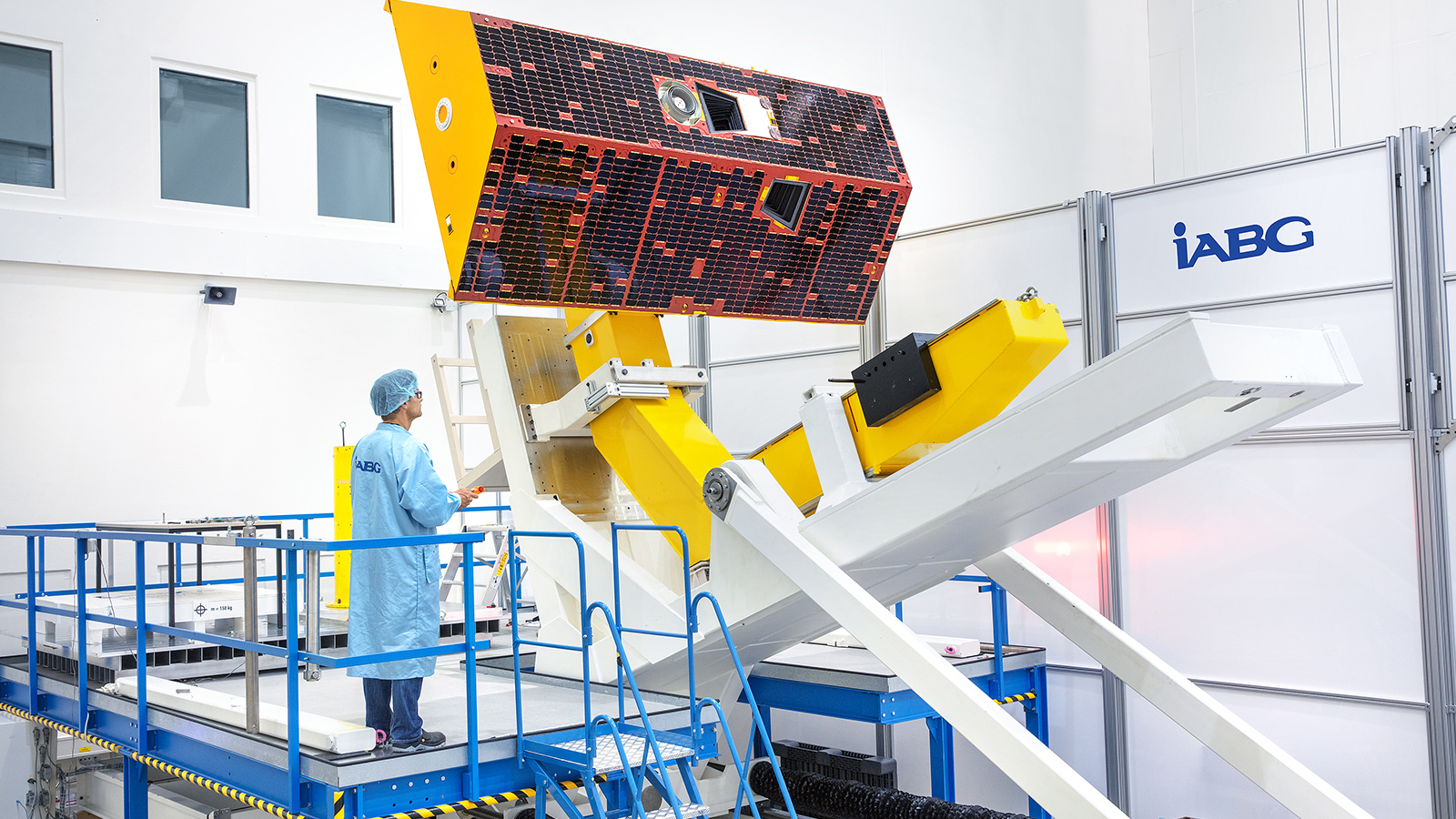Updated: Falcon 9 deploys Iridium NEXT and NASA climate satellites
By Amanda Miller and Tom Risen|May 22, 2018
A SpaceX Falcon 9 rocket dropped off a pair of NASA climate-change satellites into polar orbit on its way to deploying the next tranche of Iridium NEXT satellites for the Virginia company that is rolling out an airline tracking service through a joint venture among Aireon, Nav Canada and other navigation services.
The first stage of the rocket was the same one that boosted the classified U.S. Zuma mission in January, but this time SpaceX decided to let it fall back into the ocean. The two halves of the upper stage’s fairing opened several minutes after launch, exposing NASA’s Gravity Recovery and Climate Experiment Follow-on, GRACE-FO, satellites, developed together with the GFZ German Research Centre for Geosciences. These were released from the payload stack 11 minutes and 33 seconds after launch, the SpaceX online narrator confirmed, while the upper stage continued on with the five Iridium NEXT satellites.
If all goes according to plan, the GRACE-FO satellites will weigh terrain features, such as underground aquifers and ice-covered land masses, to track the impacts of climate change on them. NASA is counting on these satellites to pick up where the first GRACE satellites left off after their 2017 decommissioning.
The satellites will measure their distance from each other by passing microwave signals. They also carry a laser range finding experiment that scientists hope will point to even more precise measurements. When the first satellite encounters a massive feature, a mountain range for instance, the gravity tugs on it, accelerating it and increasing the distance from the second satellite, but only temporarily. As the second satellite begins to encounter the gravity, it too accelerates and catches up. When the lead satellite clears the feature, the gravity tugs on it from the opposite direction, slowing it slightly.
“We took great care to make sure that the satellite size and shape were identical to GRACE, because we want to make sure that we have a continuity mission and that we try to do everything we can to collect the same kind of data that we took on GRACE,” said Phil Morton, NASA’s GRACE-FO project manager, in a pre-launch briefing.
The Iridium satellites were released one at a time from the dispenser over a span of seven minutes about an hour and five minutes after liftoff. This brings the total number of Iridium NEXT satellites in orbit to 55 of the planned 75. In addition to providing satellite telephone service, the new satellites carry receiving antennas for Aireon. These payloads collect identification and position signals from aircraft, so they can be tracked when they are out of range of towers via their automatic dependent surveillance-broadcast, or ADS-B, transmissions.
Iridium CEO Matt Desch told reporters during a pre-launch press conference last week that customers are receiving service through 47 of the next generation satellites and 19 older model satellites that are still active. Once the Iridium NEXT constellation is complete and operational the remaining legacy satellites will gradually de-orbit and burn up in the atmosphere.
Desch said SpaceX delayed the launch by a couple of days to give the launch provider time to deal with a “minor processing issue” necessary to prepare the two-stage Falcon 9. The launch provider did not elaborate. The U.S. Air Force delayed the launch from Monday to Tuesday because the range at Vandenberg Air Force Base was not ready.






